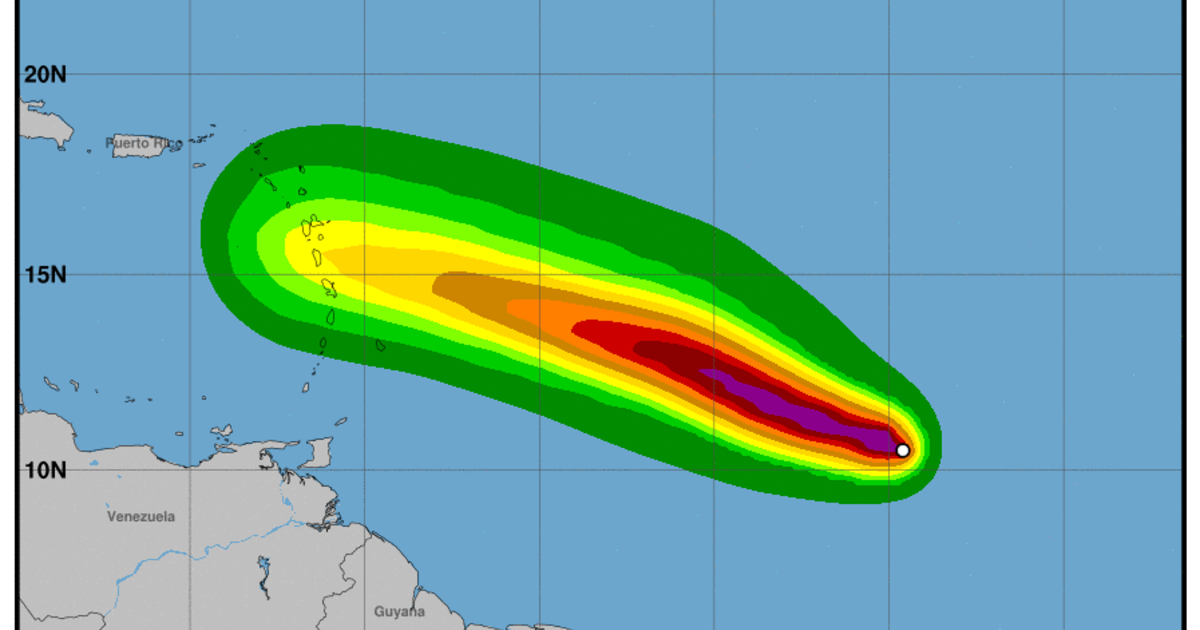Beryl’s Projected Path: Meteorological Analysis

Beryl projected path – Beryl’s projected path is influenced by several meteorological factors, including atmospheric pressure patterns, wind shear, and ocean currents. The interaction of these factors determines the storm’s direction and intensity.
Atmospheric Pressure Patterns
Atmospheric pressure patterns play a significant role in steering tropical cyclones. Beryl is expected to move towards areas of lower atmospheric pressure, typically found ahead of the storm. The pressure gradient between high and low-pressure systems creates winds that guide the storm’s movement.
Beryl projected path shows it moving away from the Lesser Antilles. The Barbados hurricane season is expected to be less active than last year. Meanwhile, Beryl is expected to continue moving northwestward.
Wind Shear
Wind shear refers to the difference in wind speed and direction at different altitudes. Strong wind shear can disrupt the organization and intensity of tropical cyclones. Beryl is expected to encounter varying wind shear conditions along its projected path, which may affect its structure and development.
Ocean Currents
Ocean currents can influence the movement and intensity of tropical cyclones. Warm ocean waters provide energy for the storm to develop and sustain itself. Beryl is expected to traverse areas with varying sea surface temperatures, which may impact its intensity.
Beryl projected path is an exciting new tool that can help you track your progress towards your goals. With its easy-to-use interface and powerful features, beryl projected path can help you stay on track and achieve your dreams. To learn more about beryl projected path, visit the website here.
Uncertainties in Prediction
Predicting the exact path and intensity of tropical cyclones is a complex task due to the inherent variability of the atmosphere and ocean. Factors such as changes in atmospheric pressure patterns, wind shear, and ocean currents can introduce uncertainties in the forecast. Therefore, it is essential to monitor the storm’s progress closely and adjust the projected path as new information becomes available.
Beryl’s Projected Path: Beryl Projected Path


Beryl’s projected path poses potential hazards to coastal communities, including flooding, storm surge, and high winds. The vulnerability of these communities and infrastructure must be assessed to develop effective mitigation measures.
Potential Hazards
- Flooding: Beryl’s heavy rainfall can cause widespread flooding, inundating low-lying areas and damaging infrastructure.
- Storm Surge: The combination of Beryl’s strong winds and low pressure can generate a storm surge, causing coastal flooding and erosion.
- High Winds: Beryl’s strong winds can cause significant damage to buildings, infrastructure, and vegetation.
Vulnerability Assessment
Coastal communities along Beryl’s projected path are particularly vulnerable due to their proximity to the coast and low-lying topography. Infrastructure, such as roads, bridges, and power lines, is also at risk.
Mitigation Measures, Beryl projected path
- Evacuations: Residents in vulnerable areas should be evacuated to higher ground before Beryl makes landfall.
- Coastal Protection: Seawalls, levees, and other coastal protection structures can help mitigate storm surge and flooding.
- Infrastructure Reinforcement: Strengthening infrastructure, such as bridges and power lines, can reduce damage caused by high winds.
Beryl’s Projected Path: Beryl Projected Path


Beryl’s projected path is a cause for concern, and it is important to take steps to communicate information about the storm and potential impacts to the public. An emergency response plan should also be in place to coordinate efforts before, during, and after the storm makes landfall. Finally, it is important to identify resources and support systems that can be used to assist communities affected by the storm.
Communication Plan
The communication plan should include the following elements:
- A clear and concise message about the storm and its potential impacts.
- A list of contact information for local emergency management officials.
- A list of resources and support systems that can be used to assist communities affected by the storm.
- A plan for disseminating information to the public through a variety of channels, including social media, local media, and community organizations.
Emergency Response Plan
The emergency response plan should include the following elements:
- A list of responsibilities for each member of the emergency response team.
- A plan for evacuating residents from affected areas.
- A plan for providing shelter and food to evacuees.
- A plan for providing medical care to those affected by the storm.
- A plan for coordinating with other agencies, such as the National Weather Service and the Red Cross.
Resources and Support Systems
There are a number of resources and support systems available to assist communities affected by Beryl. These include:
- The Federal Emergency Management Agency (FEMA)
- The American Red Cross
- The Salvation Army
- Local emergency management agencies
- Community organizations